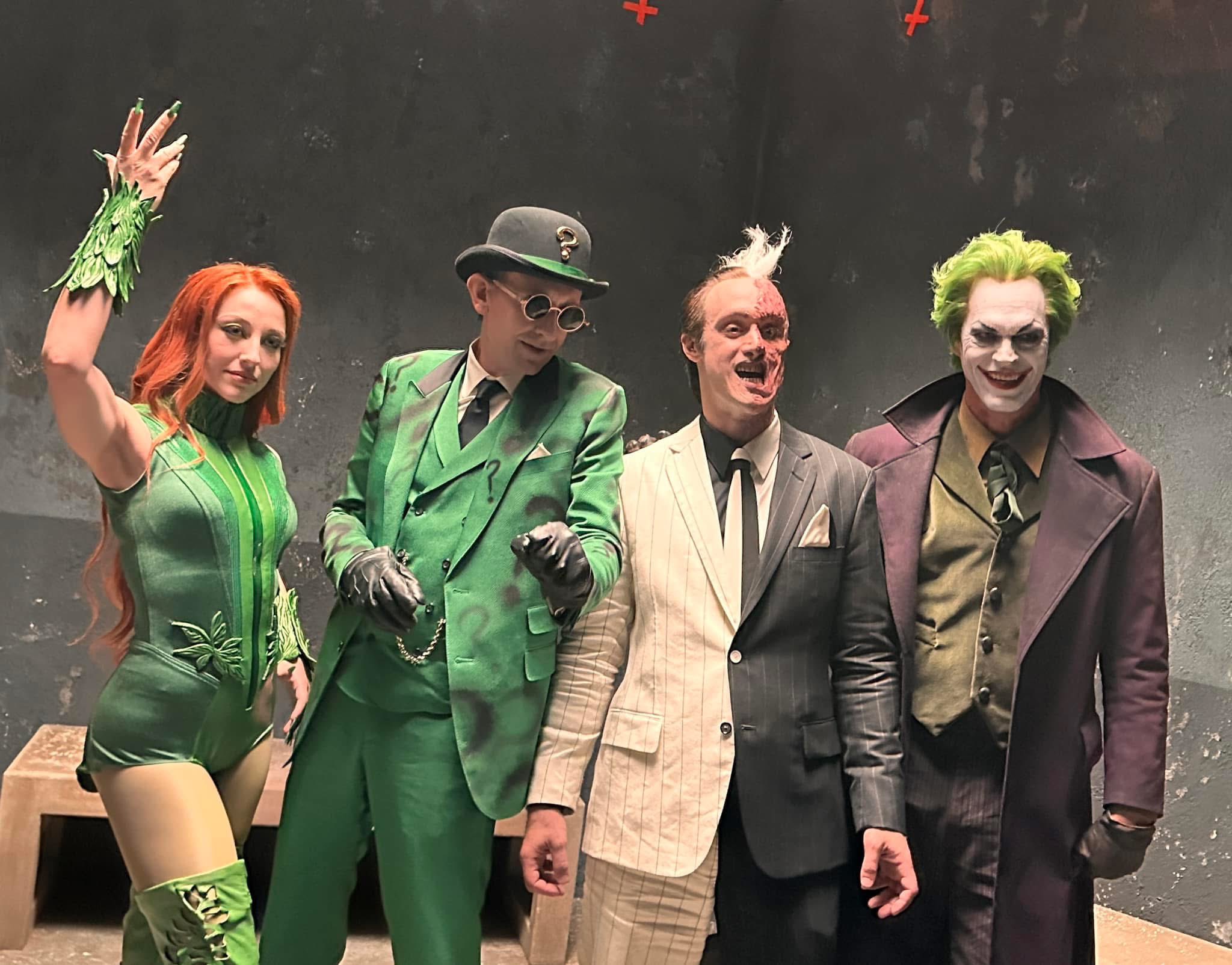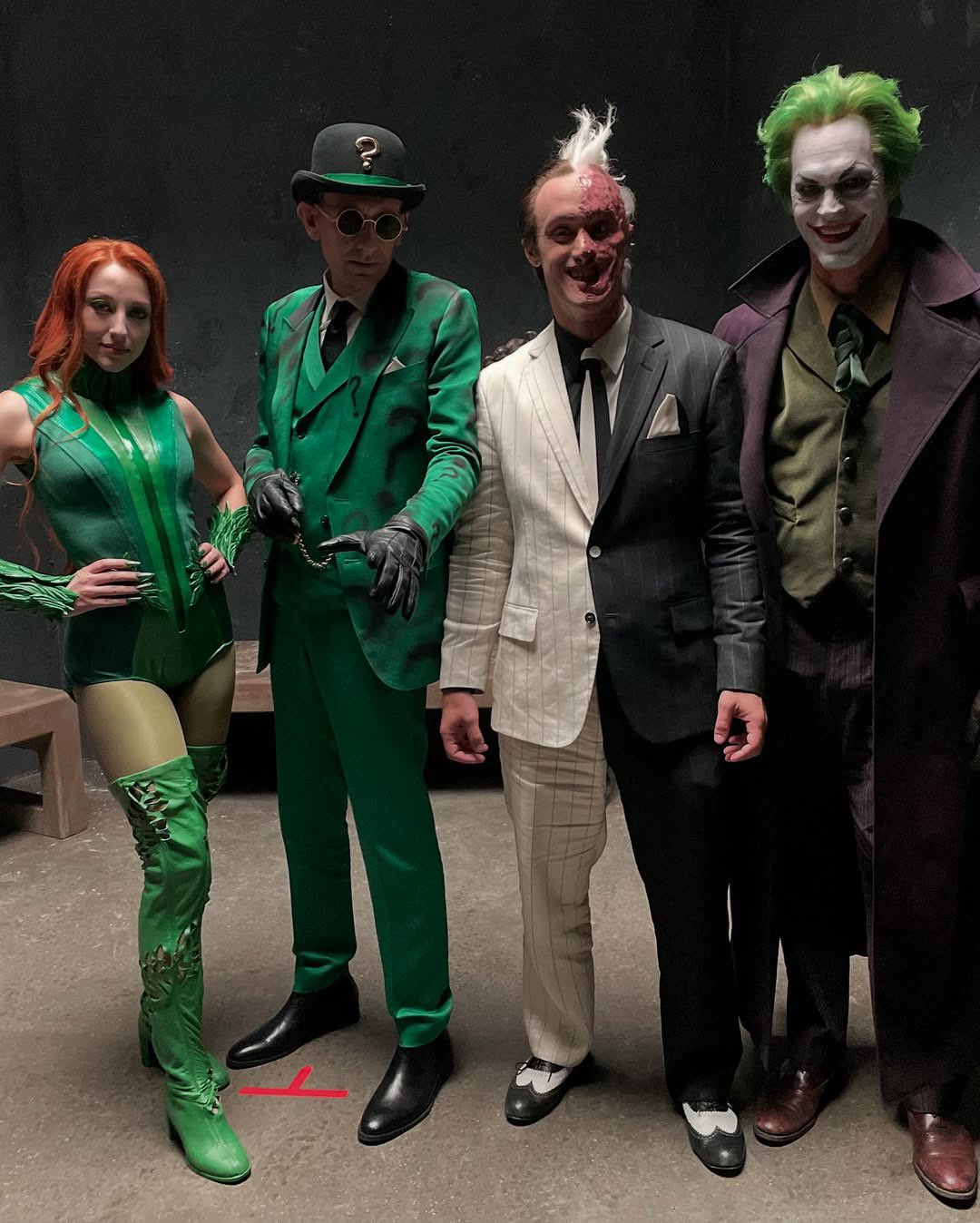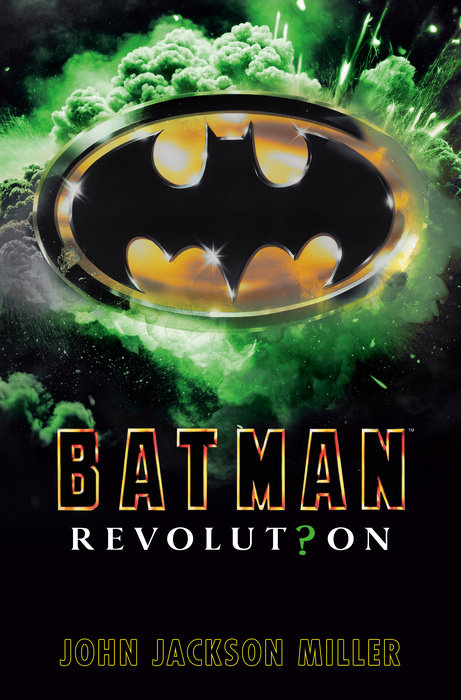- Welcome to Batman-Online.com.
Recent posts
#21
Graphic Novels / Re: Batman: Year Two
Last post by Slash Man - Mon, 17 Mar 2025, 04:29Just read this one for the first time via the DC Finest line. It's always been one of those famous stories that's persisted over the years, but fallen short of indisputable classic. It's better regarded as a sequel than The Dark Knight Strikes Again, at least, but another case of the original story being so beloved that it's nearly impossible to follow up on.
To start on what works: Alan Davis' art is immaculate, and the cover to Detective Comics #575 is one that immediately ropes you in. Unfortunately, changing artists along the way hurts the experience, especially with this being another story intended to be read as a graphic novel. While I don't think McFarlane's style is particularly suited for Batman, this does offer a unique entry for the artist. I find Alfredo Alcala's inks help reign in the style back to Batman.
The story presents a lot of good ideas that aren't taken far enough. Another issue might have given the story some time to breathe. The main villain, The Reaper is a compelling one. It's a nice bit of world-building to know that he was briefly Gotham's first vigilante, even if it is already a trope that Batman comes into conflict with vigilantes that hunt the same criminals, but kill them.
The biggest issue is how out of character Batman acts. The excuse can be given that this is still early in his career, but he gets his ass kicked once and then picks up a gun? He never really uses it in any meaningful way, since he's still not committed to taking a life. And the times that he does use it, you could easily substitute it for a batarang. Teaming up with Joe Chill and allowing him to kill people along the way, seems like a mistake.
The love interest also very forgettable. It seemed like Bruce just flirting with every girl he meets, but apparently he's serious enough about this girl to dissuade her from becoming a nun?
To start on what works: Alan Davis' art is immaculate, and the cover to Detective Comics #575 is one that immediately ropes you in. Unfortunately, changing artists along the way hurts the experience, especially with this being another story intended to be read as a graphic novel. While I don't think McFarlane's style is particularly suited for Batman, this does offer a unique entry for the artist. I find Alfredo Alcala's inks help reign in the style back to Batman.
The story presents a lot of good ideas that aren't taken far enough. Another issue might have given the story some time to breathe. The main villain, The Reaper is a compelling one. It's a nice bit of world-building to know that he was briefly Gotham's first vigilante, even if it is already a trope that Batman comes into conflict with vigilantes that hunt the same criminals, but kill them.
The biggest issue is how out of character Batman acts. The excuse can be given that this is still early in his career, but he gets his ass kicked once and then picks up a gun? He never really uses it in any meaningful way, since he's still not committed to taking a life. And the times that he does use it, you could easily substitute it for a batarang. Teaming up with Joe Chill and allowing him to kill people along the way, seems like a mistake.
The love interest also very forgettable. It seemed like Bruce just flirting with every girl he meets, but apparently he's serious enough about this girl to dissuade her from becoming a nun?
#22
The Batman (2022) / Batman vs. Bateman – State Far...
Last post by Silver Nemesis - Sun, 16 Mar 2025, 13:18This new insurance ad features Batman, Gordon, Joker, Catwoman, Two-Face, Riddler and Poison Ivy. Visually it evokes the Reeveseverse, though the villain costume designs are more comic accurate.
It reminds me of those OnStar commercials from the early 2000s.
Here are some behind-the-scenes pics.





It reminds me of those OnStar commercials from the early 2000s.
Here are some behind-the-scenes pics.





#23
Comic Film & TV / Re: Spider-Man 2 (2004) Comic ...
Last post by The Joker - Sun, 16 Mar 2025, 07:03The script involving a decidedly less sympathetic Doc Ock, whom is responsible for the deaths of Peter's parents, certainly has shades of Batman 1989.
I'm sure the comparison would've been made, but who's to really say how that would have gone over with the fans? Since deviating from the comic source doesn't seem to get the amount of critique with the MCU, as it does with DC.
Could just be a Superman/Batman thing though.
#24
Comic Film & TV / Re: Judge Dredd (1995) and the...
Last post by The Joker - Fri, 14 Mar 2025, 18:12 #25
Animated Batman / Re: Batman Beyond
Last post by The Dark Knight - Fri, 14 Mar 2025, 13:55Quote from: Travesty on Fri, 14 Mar 2025, 13:24It's been a long time since I've watched it. I bought it on blu-ray, but never got around to watching it. I should get around to it soon.I recently finished season one. The amalgamation of moods is what keeps reeling me in. Terry gets to be a Spider-Man like character of a younger kid juggling school and crime fighting, being the age of a typical sidekick like Robin. Then we have Bruce still down in the cave, when Barbara and the others have long moved on. The mission never ends and the flashes of his Batman charisma can't help but make you smile.
It's still pretty clear that Bruce IS Batman and the red suit which amplifies strength and makes the job easier is required for Terry to operate at this level, despite the skill he naturally possesses. I like that. Both old Bruce and young Terry needed an advantage.
The show was also wise to give brand new villains to demonstrate the world went on, and the likes of Freeze and Bane suffered the consequences. Just very well thought out all around. Interesting and fun.
#26
Animated Batman / Re: Batman Beyond
Last post by Travesty - Fri, 14 Mar 2025, 13:24It's been a long time since I've watched it. I bought it on blu-ray, but never got around to watching it. I should get around to it soon.
#27
Animated Batman / Re: Batman Beyond
Last post by The Dark Knight - Tue, 11 Mar 2025, 08:54I've been going through Beyond again and have been enjoying myself immensely.
Apart from appreciating The Matrix and Blade Runner, Beyond taps into something I've felt for a long time now: the best has already been and it's just a memory. People aren't coming back and you're alone. But nonetheless, we carry on.
Bruce's biggest weapon has always been his mind, and Beyond proves it when his body is no longer as able. The show never discounted what Bruce could do while still giving Terry his time to shine. There's a really nice balance in that regard. I also like the fact Bruce actually wore the red futuristic suit for a period of time before retiring. It somehow softens the blow that a younger replacement has assumed the public image and title of Batman, having earned permission to use the suit from the man himself rather than making his own.
I love TDK Returns, but Beyond is how I envision Bruce's story reaching its end. At some point he would reach an age where he can no longer fight. There's a fitting full circle beauty that he essentially becomes an Alfred figure with unlimited on the job experience to provide a new Batman.
In short, it holds up and it's awesome.
Apart from appreciating The Matrix and Blade Runner, Beyond taps into something I've felt for a long time now: the best has already been and it's just a memory. People aren't coming back and you're alone. But nonetheless, we carry on.
Bruce's biggest weapon has always been his mind, and Beyond proves it when his body is no longer as able. The show never discounted what Bruce could do while still giving Terry his time to shine. There's a really nice balance in that regard. I also like the fact Bruce actually wore the red futuristic suit for a period of time before retiring. It somehow softens the blow that a younger replacement has assumed the public image and title of Batman, having earned permission to use the suit from the man himself rather than making his own.
I love TDK Returns, but Beyond is how I envision Bruce's story reaching its end. At some point he would reach an age where he can no longer fight. There's a fitting full circle beauty that he essentially becomes an Alfred figure with unlimited on the job experience to provide a new Batman.
In short, it holds up and it's awesome.
#28
Current Runs / Re: Batman: Revolut?on (Second...
Last post by The Dark Knight - Thu, 6 Mar 2025, 11:56I'm less excited about this compared to Resurrection, but I'll probably get it.
The first book was a good Batman story (despite aspects not feeling pure Burton) and the Easter eggs were pretty fun. The synopsis for Revolution seems to be The Batman inspired, but with Riddler being jealous of Batman from the outset rather than in awe. I find myself connecting with Riddler quite a lot with the general modus operandi of exposing dirty secrets, which blurs the lines between hero and villain.
If this is Miller's last book I'm interested to see how he wraps up characters like Knox and sets the stage for Returns. I imagine the Strongman or other gang members could make more appearances. Riddler obtaining the Batmobile blueprints and passing them on would be a neat touch.
The first book was a good Batman story (despite aspects not feeling pure Burton) and the Easter eggs were pretty fun. The synopsis for Revolution seems to be The Batman inspired, but with Riddler being jealous of Batman from the outset rather than in awe. I find myself connecting with Riddler quite a lot with the general modus operandi of exposing dirty secrets, which blurs the lines between hero and villain.
If this is Miller's last book I'm interested to see how he wraps up characters like Knox and sets the stage for Returns. I imagine the Strongman or other gang members could make more appearances. Riddler obtaining the Batmobile blueprints and passing them on would be a neat touch.
#29
Current Runs / Re: Batman Revolution (Second ...
Last post by Gotham Knight - Tue, 4 Mar 2025, 14:57From Penguin Random House:
"ABOUT BATMAN: REVOLUTION
Batman matches wits with The Riddler and uncovers Gotham's past in this sequel to Batman: Resurrection, set in the world of Tim Burton's iconic Batman.
It's summer, and Gotham City has cause for celebration. The last vestiges of The Joker's toxic legacy have finally faded, just in time for the mayor to partner with retail magnate Max Shreck to stage a Fourth of July celebration for the ages. But not everyone is rejoicing. Batman's eternal vigilance continues as threats from rival gangs and masked criminals escalate by the day. Meanwhile, on the streets, protests grow in opposition to the city's lavish excesses.
No one is experiencing the struggle between Gotham's optimism and doubt more than Norman Pinkus. The Gotham Globe's humble copy boy, he's the unacknowledged mastermind behind the newspaper's mega-popular Riddle Me This word puzzles. But Norman harbors a secret. He is the smartest man in Gotham City, using his prodigious skills to solve crimes anonymously for years via the police tip line—before Batman even knows there's a crime to solve.
While neither fame nor fortune finds Norman, he believes in the promise of Gotham and what's right . . . until he doesn't. The man no one notices watches time and again as the city and its leaders cast their eyes high above the rooftops toward Batman. Dejected and unappreciated, Norman devises a scheme: With the help of dangerous new friends, he exploits the simmering tensions of the long hot summer to draw the Caped Crusader into a volatile game of riddles to crown Gotham's true savior. As they clash, Norman—now known as The Riddler—and Batman will uncover hidden secrets about Gotham's past that will have dire consequences for the city's future."
"ABOUT BATMAN: REVOLUTION
Batman matches wits with The Riddler and uncovers Gotham's past in this sequel to Batman: Resurrection, set in the world of Tim Burton's iconic Batman.
It's summer, and Gotham City has cause for celebration. The last vestiges of The Joker's toxic legacy have finally faded, just in time for the mayor to partner with retail magnate Max Shreck to stage a Fourth of July celebration for the ages. But not everyone is rejoicing. Batman's eternal vigilance continues as threats from rival gangs and masked criminals escalate by the day. Meanwhile, on the streets, protests grow in opposition to the city's lavish excesses.
No one is experiencing the struggle between Gotham's optimism and doubt more than Norman Pinkus. The Gotham Globe's humble copy boy, he's the unacknowledged mastermind behind the newspaper's mega-popular Riddle Me This word puzzles. But Norman harbors a secret. He is the smartest man in Gotham City, using his prodigious skills to solve crimes anonymously for years via the police tip line—before Batman even knows there's a crime to solve.
While neither fame nor fortune finds Norman, he believes in the promise of Gotham and what's right . . . until he doesn't. The man no one notices watches time and again as the city and its leaders cast their eyes high above the rooftops toward Batman. Dejected and unappreciated, Norman devises a scheme: With the help of dangerous new friends, he exploits the simmering tensions of the long hot summer to draw the Caped Crusader into a volatile game of riddles to crown Gotham's true savior. As they clash, Norman—now known as The Riddler—and Batman will uncover hidden secrets about Gotham's past that will have dire consequences for the city's future."
#30
Current Runs / Batman: Revolut?on (Second 89 ...
Last post by Gotham Knight - Tue, 4 Mar 2025, 02:36
New artwork for the next Batman 89 novel. More details coming soon
